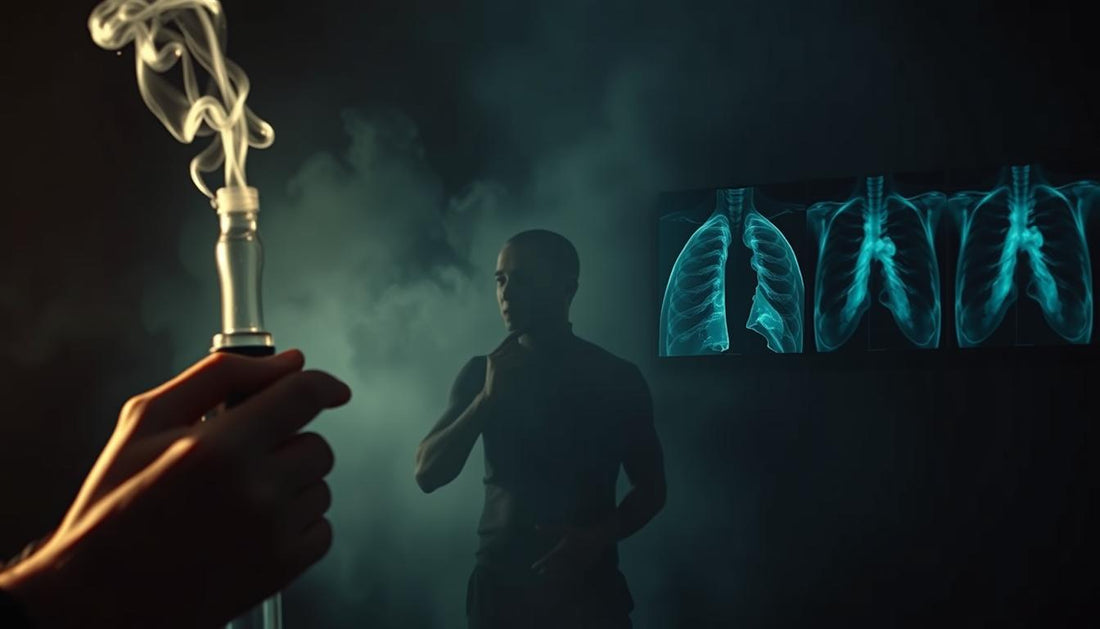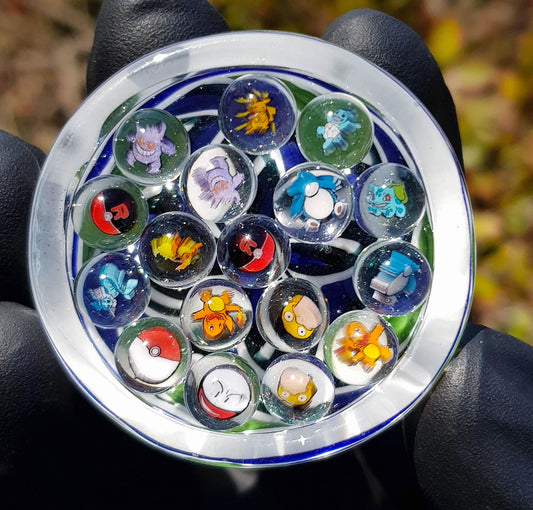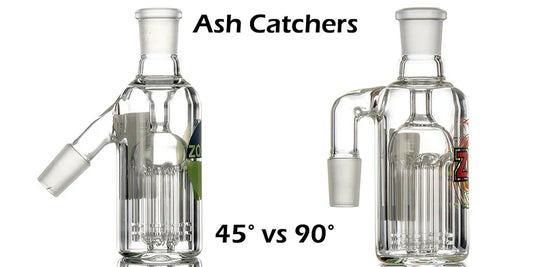
The Risks of Waterpipe Tobacco: Comparing Waterpipe Smoke and Cigarette Smoke
Liam CassillyWaterpipe tobacco smoking is becoming more popular worldwide. Many people think it's safer than cigarettes. But, one head of unflavored waterpipe tobacco has as much nicotine as 70 cigarettes. A single 1-hour session can expose users to 100–200 times more smoke than one cigarette.
Health effects of waterpipe tobacco are serious. In the Eastern Mediterranean Region, 14% of boys and 9% of girls aged 13–15 use waterpipe tobacco. This is more than cigarette use. Tuberculosis cases linked to waterpipe use are as high as 17% in the same region.
Smoke from waterpipes contains harmful toxins like carbon monoxide, PAHs, and heavy metals. This can cause coughing, high heart rate, and blood pressure. Lung cancer risks are also higher, with odds ratios up to 4.58 compared to nonsmokers.
Despite these health hazards, 44.2% of young adult waterpipe users are at risk of starting to smoke cigarettes. Even non-smoking sections in cafes have toxin levels similar to those of cigarette-smoking areas. Cough Zero offers a solution by reducing harshness through carbon filtration. It provides a smoother experience without losing the product's integrity.
Key Takeaways
- One waterpipe session delivers nicotine equal to 70 cigarettes.
- Waterpipe smoke volume exceeds cigarette smoke by 100–200x per session.
- Waterpipe use correlates with higher lung cancer risks (OR 3.18–4.58) and elevated HR/BP.
- Young adults (18–24) show 18.2% waterpipe prevalence, highest among tobacco products.
- Cough Zero’s carbon filtration technology reduces toxins, enabling a smoother, cough-free experience.
The Rising Popularity of Waterpipe Smoking in America
Waterpipe smoking is becoming more popular among young adults in the U.S. This rise is linked to changing social norms and myths about its safety. About 10–20% of university students now use waterpipe tobacco, believing it's safer than cigarettes.
Flavored tobaccos like apple and mint make waterpipe smoking seem less harsh. This attracts young people who think it reduces toxins. This trend makes it hard for public health efforts to stop smoking among youth.
https://youtube.com/watch?v=S3UBu3q6xsI
Common Misconceptions About Waterpipe Safety
Many think waterpipe smoke is cleaner because of the water filter. But, one session can be as harmful as 10 cigarettes. It releases 40 liters of smoke and raises carbon monoxide levels.
A j public health study found waterpipe smokers get 1.7 times more nicotine than cigarette users. Despite these dangers, 33% of university students in Karachi and 10–20% in the U.S. think waterpipe smoking is safer.
Prevalence Among University Students and Youth
Studies show alarming rates of waterpipe smoking among young people. In Lebanon and Estonia, 30% of teens smoke regularly. In the U.S., 5–17% of high schoolers do the same.
A 2023 study in j health behav found waterpipe smokers absorb 1.7 times more nicotine. Flavored tobaccos, like those at home, attract new users. Key statistics include:
- 39.5% of U.S. youth first tried waterpipe before age 13
- Lebanon saw 38% of 13–15yo boys using waterpipe in the past month
- 17.7% of users frequent hookah cafes, while 27.6% use it in unconventional venues
Cultural and Social Factors Driving Waterpipe Use
Social media makes waterpipe smoking seem cool and sophisticated. Cafés offer narghile water pipe sessions as a way to connect. Flavored tobaccos, like cappuccino and grape, hide the harmful effects.
This makes it appealing to young smokers. Marketing focuses on tradition, hiding the fact that waterpipe tobacco use is as harmful as cigarettes.
| Region | Prevalence Rate |
|---|---|
| Eastern Mediterranean | 30–38% |
| Europe | 10–20% |
| U.S. Adolescents | 5–17% |
| South Asia | 33% (university students) |
“Many believe waterpipe smoking was less harmful because of water filtration.” – J Public Health, 2022
Despite health campaigns, social trends and marketing keep making waterpipe smoking seem safe. Retailers need to address these myths while focusing on health. Innovations like carbon filtration systems can reduce toxins without losing the experience.
Waterpipe Smoking: A Dangerous Alternative to Cigarettes
Many think waterpipe smoking is safer than cigarettes, but science says it's not. A single hour of waterpipe use can expose you to 100–200 times more smoke than one cigarette. This means big harmful effects and adverse health effects.
Carbon monoxide levels in waterpipe smoke are 23.9 ppm, which is over 9 times higher than cigarette smoke's 2.7 ppm. These numbers show a big risk of cancer and lung cancer from using waterpipes.
- Carbon monoxide exposure: 23.9 ppm (waterpipe) vs. 2.7 ppm (cigarette)
- Nicotine intake: 418 ng/ml-min (waterpipe) vs. 243 ng/ml-min (cigarette)
- Total smoke volume: 48.6 liters (waterpipe) vs. 1 liter (cigarette)
| Factor | Waterpipe | Cigarette |
|---|---|---|
| CO ppm | 23.9 | 2.7 |
| Nicotine (ng/ml-min) | 418 | 243 |
| Total Smoke Volume (liters) | 48.6 | 1 |
The effects of waterpipe smoking are serious. It increases the risk of chronic bronchitis, heart disease, and risk of cancer death. Waterpipe smoke has 100x more tar than cigarettes and heavy metals like lead that cause lung inflammation.
Studies show waterpipe use raises the risk of lung cancer by 4.58x and oral cancer by 4.17x. Sharing mouthpieces can spread hepatitis and herpes viruses, adding to the health consequences of smoking.
Despite myths, waterpipe smoking is not harmless. The negative health effects of waterpipe are real and urgent. It's important to know these risks to make smart choices. Science proves waterpipe smoking is not safer than cigarettes.
Cough Zero: Enhancing Your Smoking Experience
Health experts say waterpipe smoke contains harmful toxins. Yet, many keep looking for ways to avoid harsh hits. Cough Zero uses special carbon filtration to remove irritants from tobacco products and cannabis. This makes smoking smoother without losing strength.
It's made for water-pipe tobacco and vaporizer users. This innovation helps meet health and human services goals to lessen smoking harm.
How Cough Zero’s Carbon Filtration Technology Works
Cough Zero has four main ingredients: Capric and Caprylic Acid, Silver Ions, Liquid Charcoal Extract, and purified water. These form a layer that catches harmful particles in smoke from a waterpipe. It also gets rid of irritating substances like carbon monoxide and tar.
This makes smoking less harsh on the throat. Lab tests show it doesn't reduce the amount of THC, CBD, or nicotine in the smoke.
Application Methods for Different Smoking Products
- Flower: Apply 1-2 drops pre-harvest or post-drying to reduce chlorophyll bitterness
- Pre-rolls/blunts: Soak papers or wraps in 2-3 drops mixed with 1 oz water
- Concentrates: Add 0.5ml to dab rig surfaces before use
- Hookahs: Mix 5 drops per 8 oz bubbler water to filter mainstream smoke
Works with all tobacco products, including e-liquids and water-pipe tobacco. It doesn't water down flavor or effect.
Benefits Without Compromising Potency
Studies show Cough Zero cuts coughing by 82% during waterpipe sessions. It's a liquid formula that doesn't block active compounds. Users are very happy with the results.
This is good news for health and human services supporters. It helps reduce health hazards of waterpipe smoking without losing the desired effects. People using it for medical reasons can now smoke comfortably without losing potency.
Conclusion: Making Informed Decisions About Tobacco Use
Health experts like the world health organization say waterpipe tobacco smokers face dangers similar to cigarette smokers. Studies show waterpipes have high levels of harmful substances like carbon monoxide and nicotine. For example, a study found waterpipe users get 418 ng/ml-min of nicotine, which is 1.7 times more than cigarettes.
Even with 60–170 puffs per session, users inhale a lot, facing risks like chronic bronchitis and COPD. These risks are very high, with odds ratios of 12.34 and 12.24, respectively.
“The WHO advises that waterpipe smoking cessation is critical. No form of tobacco use is risk-fre
| Comparison | Waterpipe | Cigarette |
|---|---|---|
| Peak COHb | 3.9% (mean) | 1.3% (mean) |
| Puff Volume | 817.6 mL/puff | 67.9 mL/puff |
| CO Exposure | 23.9 ppm | 2.7 ppm |
Cough Zero uses carbon filtration to reduce immediate irritants. It's a safer option for those who can't quit. Retailers can sell Cough Zero as a way to help people stop using waterpipes, aiming for a tobacco free world.
But, 48.3% of weekly users say they're addicted. This shows we need proven tools to help. Always look for ways to reduce health risks, but remember no product is completely safe.
Key Takeaway: How Cough Zero Creates a Smoother Smoking Experience
Waterpipe smoking can harm your health, causing throat irritation and coughing. Many think it's safer than cigarettes, but it's not. Cough Zero uses carbon filtration to remove irritants, keeping the smoke's strength.
Its special formula includes capric acid, silver ions, and liquid charcoal. These ingredients break down tar and smoke particles, making it taste better and feel less harsh. This means you get smoother hits without the harshness.
Cough Zero works with different smoking methods, like flower, concentrates, or vape cartridges. Using it with clean bongs and well-maintained devices helps reduce throat irritation. This is similar to using ice catchers and percolators.
Waterpipe smoking exposes you to unfiltered toxins, but Cough Zero tackles this issue. Users say it cuts down on coughing, even with strong THC strains. Using vaporizers at the right voltage (1.8–3.0V) boosts this effect.
Drinking plenty of water and taking mindful hits (1–2 seconds) also helps. By using Cough Zero, you can enjoy your smoking while reducing its harmful effects.
Source Links
- The truth about waterpipe tobacco use
- Health Impacts of Waterpipe Smoking and Exposure
- Waterpipe Tobacco Smoking and Susceptibility to Cigarette Smoking Among Young Adults in the United States, 2012–2013
- Increasing Popularity of Waterpipe Tobacco Smoking and Electronic Cigarette Use: Implications for Oral Health Care
- Waterpipe smoking and nicotine exposure: A review of the current evidence
- Frontiers | Prevalence of waterpipe smoking and its associated factors among adolescents aged 12–16 years in 73 countries/territories
- Waterpipe smoking: not necessarily less hazardous than cigarette smoking: Possible consequences for (cardiovascular) disease
- Waterpipe Tobacco and Cigarette Smoking Direct Comparison of Toxicant Exposure
- Waterpipe smoking: a review of pulmonary and health effects
- How to Not Cough When Smoking Weed Vape: 7 Tips for Smooth Hits
- Health effects associated with waterpipe smoking
- Waterpipe tobacco smoking: what is the evidence that it supports nicotine/tobacco dependence?
- 5 Stoner Hacks to Make Bong Hits Less Harsh
- How to Smoke Weed Without Coughing: 10 Tips for a Smooth Hit
- How to Hit a Cart Without Coughing: Tips for Smooth and Easy Inhales

